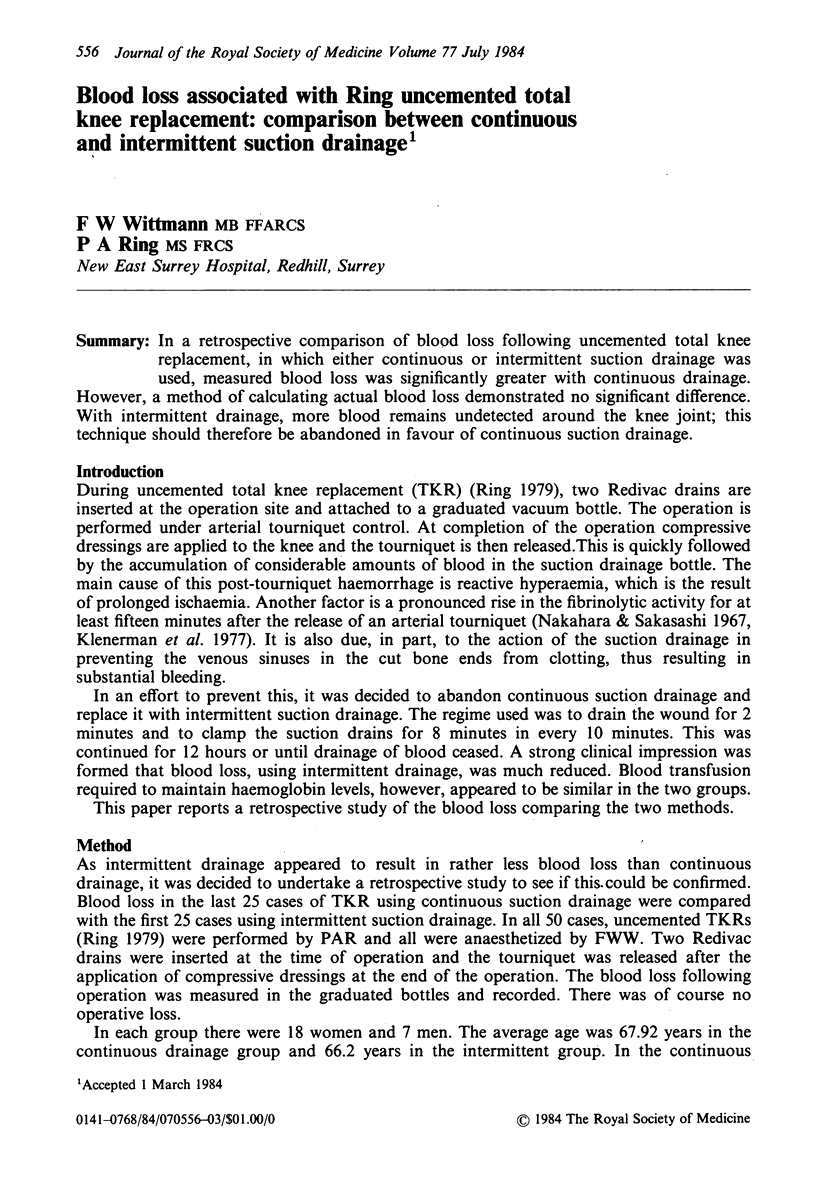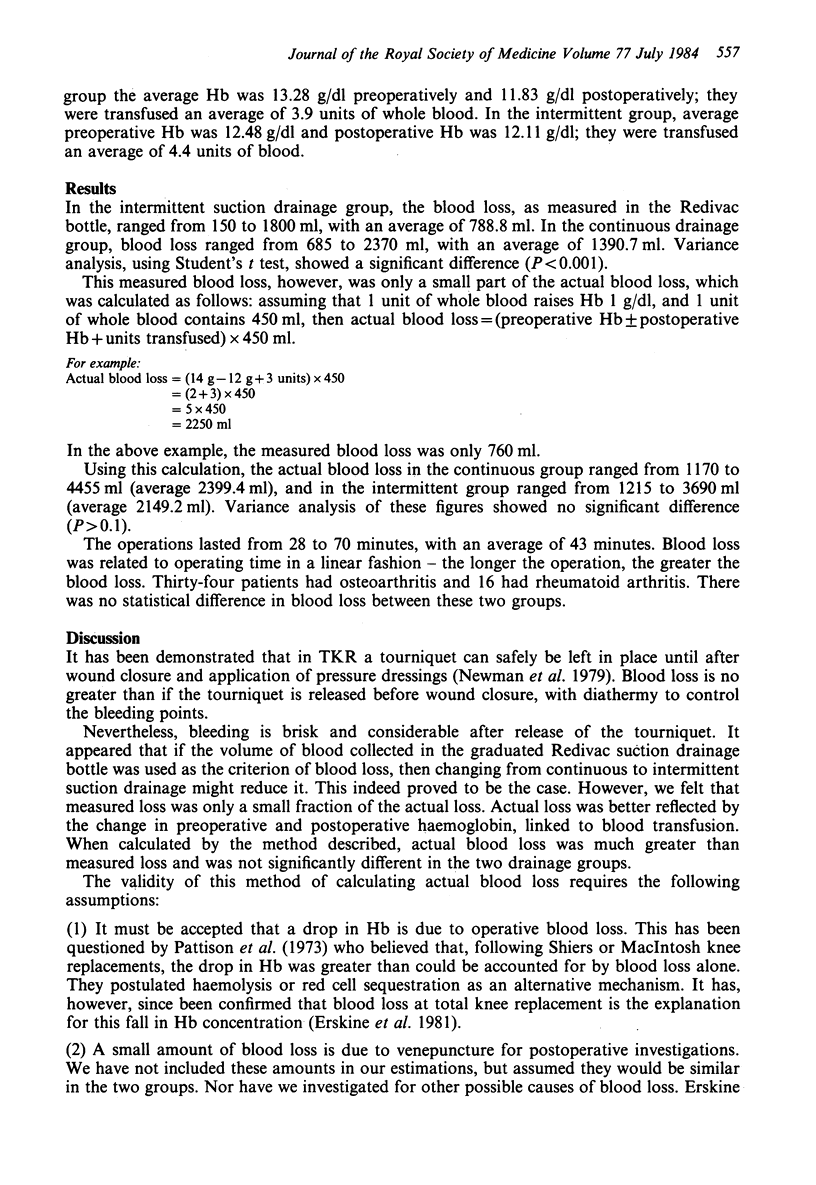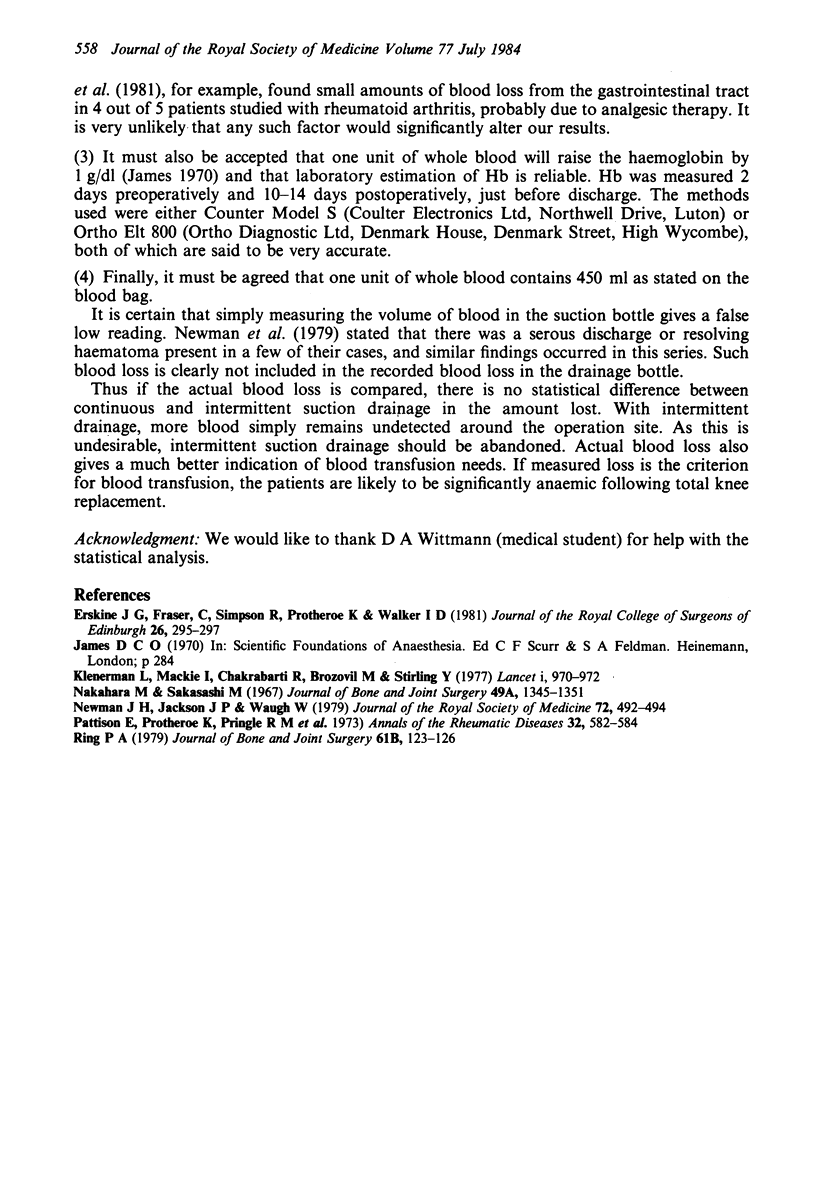Abstract
In a retrospective comparison of blood loss following uncemented total knee replacement, in which either continuous or intermittent suction drainage was used, measured blood loss was significantly greater with continuous drainage. However, a method of calculating actual blood loss demonstrated no significant difference. With intermittent drainage, more blood remains undetected around the knee joint; this technique should therefore be abandoned in favour of continuous suction drainage.
Full text
PDF


Selected References
These references are in PubMed. This may not be the complete list of references from this article.
- Erskine J. G., Fraser C., Simpson R., Protheroe K., Walker I. D. Blood loss with knee joint replacement. J R Coll Surg Edinb. 1981 Sep;26(5):295–297. [PubMed] [Google Scholar]
- Klenerman L., Chakrabarti R., Mackie I., Brozovic M., Stirling Y. Changes in haemostatic system after application of a tourniquet. Lancet. 1977 May 7;1(8019):970–972. doi: 10.1016/s0140-6736(77)92276-0. [DOI] [PubMed] [Google Scholar]
- Nakahara M., Sakahashi H. Effect of application of a tourniquet on bleeding factors in dogs. J Bone Joint Surg Am. 1967 Oct;49(7):1345–1351. [PubMed] [Google Scholar]
- Newman J. H., Jackson J. P., Waugh W. Timing of tourniquet removal after knee replacement. J R Soc Med. 1979 Jul;72(7):492–494. doi: 10.1177/014107687907200706. [DOI] [PMC free article] [PubMed] [Google Scholar]
- Pattison E., Protheroe K., Pringle R. M., Kennedy A. C., Dick W. C. Reduction in haemoglobin after knee joint surgery. Ann Rheum Dis. 1973 Nov;32(6):582–584. doi: 10.1136/ard.32.6.582. [DOI] [PMC free article] [PubMed] [Google Scholar]


